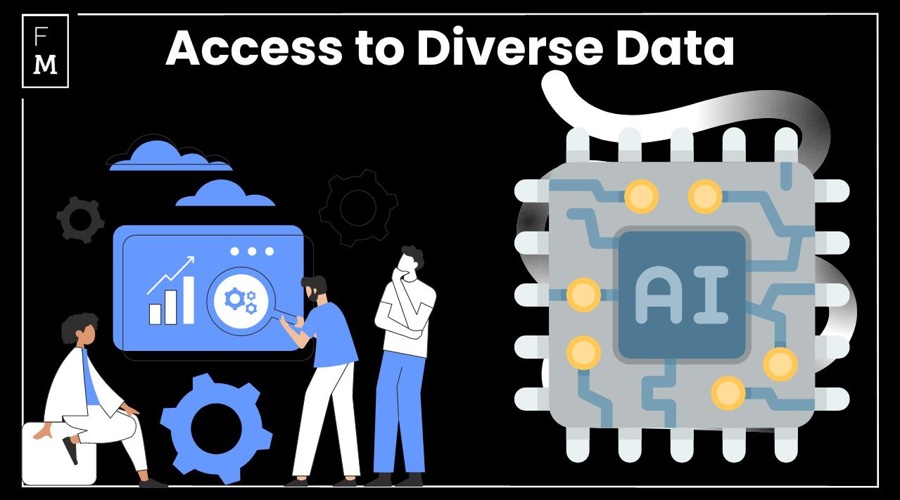How AI Balances Financial Innovation and Regulatory Responsibility?
Artificial intelligence (AI) technologies have transformed the delivery of traditional financial services, providing opportunities to increase revenues and reduce costs. However, their development poses new challenges and risks, in particular the inability of antiquated existing laws to provide an enabling environment for these technologies.

Artificial Intelligence (AI) technology has changed the way traditional financial services are delivered, offering opportunities to increase revenue and reduce costs. However, its development has brought new challenges and risks, especially regarding its relationship with existing laws, which are often outdated and fail to provide a favorable environment for these technologies.
However, understanding regulatory details is crucial before integrating AI into your business. This article will analyze the applications of artificial intelligence in consumer finance and responsible lending obligations.
Responsible Lending
If you provide or assist consumers in obtaining or increasing credit products for personal, family, and household purposes or for the purchase or improvement of residential investment property, then responsible lending obligations will apply to you.
Responsible lending obligations are provided in Chapter 3 of the National Consumer Credit Protection Act 2009 (NCCPA). In general, they prohibit credit licensees from entering into or assisting consumers in obtaining credit products that are unsuitable for them.
The NCCPA requires providers of credit assistance and credit to assess whether credit contracts are unsuitable for consumers and to conduct an assessment if a contract is entered into or credit limit is increased. Before conducting the assessment, providers need to:
- Reasonably inquire about the consumer's requirements and objectives for the credit product.
- Reasonably inquire about the consumer's financial situation.
- Take steps to verify the consumer's financial situation.
In some cases, credit product applications or credit limit increases must be assessed as unsuitable. This includes situations where, during the assessment:
Consumers are unable to meet the financial obligations of the credit product, such as being unable to make repayments on time.
Consumers can only meet the financial obligations of the credit product with substantial hardship.
The credit product does not meet the consumer's needs or objectives.
There are other circumstances where you may determine that a credit product or credit limit increase is unsuitable and reject certain applications.
Challenges Ahead
AI technology is increasingly being used in the approval process to assess unsuitability. However, the challenge with using AI lies in the possibility of biased data, resulting in inherent discrimination. To overcome this obstacle, AI technology needs to be based on transparent models, recognizing and addressing the possibility of bias.
If you intend to rely on this technology, you should be able to explain to consumers how the results of AI technology are derived and how they align with your responsible lending obligations.
Continuously testing and monitoring the technology is essential to reduce the emergence of new biases and promptly correct such biases or inaccuracies.
Robust data privacy and security measures are crucial for the reliability and integrity of AI technology. Consumers should be able to trust that their data will be managed responsibly. For example, when employing machine learning techniques, anonymization of personal information may be necessary, or synthetic data may be included in other ways.
Remain vigilant against data breaches and establish controls to identify and address such risks, such as limiting the control of algorithms.
Effective governance in AI technology is more likely to facilitate its smooth integration into business. Adequate allocation of manpower and financial resources, as well as clear responsibilities and accountability mechanisms, are needed. An AI decision-making framework centered around responsible lending obligations, along with formal training programs, will translate into trusted and responsible AI usage.
Ultimately, as we continue to transition to the digital economy, the focus on the use of artificial intelligence technology in consumer finance lies in:
- Transparency, to explain to consumers the reasons for unsuitability assessments.
- Control implementation, to ensure data privacy and security are maintained while correcting any biases to align with responsible lending obligations.
- Accountability, to foster trust and confidence in artificial intelligence and the decision-making behind it.
Disclaimer: The views in this article are from the original Creator and do not represent the views or position of Hawk Insight. The content of the article is for reference, communication and learning only, and does not constitute investment advice. If it involves copyright issues, please contact us for deletion.